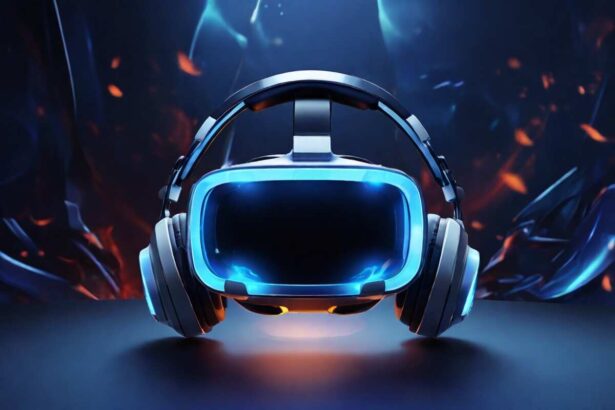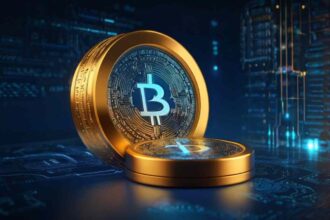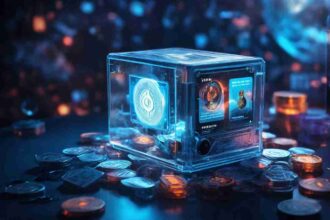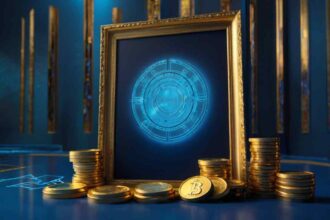Understanding Metaverse and NFTs in the virtual world and everything that it entails has become one of the most difficult things when it comes to many individuals. I fully got you covered in this piece of writing where I have clearly explained NFTs together with the Metaverse comprehensively. Get to understand the terms and how you can apply them within the digital space.
- Introduction to Metaverse And NFTs
- Understanding the Metaverse
- Evolution of the Metaverse
- Virtual Worlds; Science Fiction Origin and Emergence
- Coming of Internet-Driven Multiplayer Games and Social Networks
- Advancements in Virtual Reality Technology
- Applications of the Metaverse World May Be Possible
- Virtual Meetings and Collaboration
- Education and Training
- Virtual Tourism and Exploration
- Virtual Commerce and Shopping
- Healthcare and Therapy
- Social Networking and Communication
- Art and Creativity
- Future Potential and Expansion
- Non-Fungible Tokens (NFTs)
- The Rise of NFTs
- Crypto Art Boom
- Tokenization of Real-World Assets
- Social Media’s Influence as the Newest Culture
- Challenges and Criticisms Surrounding NFTs
- Environmental Impact
- Lack of Regulation and Standards
- Market Volatility and Speculation
- Copyright and Intellectual Property Concerns
- Accessibility and Exclusivity
- Lack of Tangible Value
- Potential for Asset Replication and Overproduction
- NFTs and Digital Ownership
- Tokenizing Real-World Assets
- Digital Art and Collectibles
- A Virtual World of “Virtual Real Estate”
- Democratizing Digital Art, the Making of Creative Processes
- Ensuring Provenance and Authenticity
- The Intersection of the Metaverse with NFTs
- Conclusion
Metaverse and NFTs have become a common topic for people who have already ventured into the digital space. In this article, I have dived in to give all the information one may need both as a beginner in the virtual world or an experienced person within the space. Understand its real-world user case, advantages, and the combination between the two terms.
Introduction to Metaverse And NFTs
The emergence of Metaverse and NFTs has kick-started global conversations about what is to come in the field of digital ownership. We now stand at the dawn of a new era in which meaningful and workable digital assets and virtual realities can be created using modern technology. The present article goes through various perceptions that are associated with the Metaverse, NFTs, and their possible outcomes within other spheres of life.
Understanding the Metaverse
However, a metaverse is a computer-generated environment containing an artificial reality space. This not only exceeds the conventional virtual reality setting but presents a shared, persistent global universe in which one enters with any machine. This is where the metaverse comes in, trying to merge the physical and digital worlds for people to interact with each other unrestrictedly and infinitely.
Twitter has more Additional information on the same
Evolution of the Metaverse
Virtual Worlds; Science Fiction Origin and Emergence
The concept of the Metaverse started in science fiction literature, being an artificial world filled with imaginary individuals and things. The concept of the virtual world dates back to Neal Steven’s 1992 book “Snow Crash” in naming it Metaverse.
In his novel, Stephenson presents us with the metaverse, which functions as a complete virtual reality space that allows users to access many worlds via avatars and interact with each other. Gibson’s Metaverse foretold the idea of virtual reality and the coming of cyberspace.
Coming of Internet-Driven Multiplayer Games and Social Networks
Snow Crash and Metaverse and NFTs spread worldwide after its release. This caused the emergence of popularity for online multi-player games such as A World of Warcraft and Second Life which allowed people to create their avatars, navigate the world, and socialize with other gamers online.
Virtual worlds made way for people to visit virtual communities where they could chat, trade virtual items, or even create their products. They also improved the perception of Metaverse as a virtual space for interaction and experiential learning.
Advancements in Virtual Reality Technology
It is a matter of truth that the past ten years have become extremely successful in the implementation of the dream about the Metaverse. VR devices such as haptic feedback devices, high-grade quality VR headsets, and motion tracking technology allow the users to feel like they are actually in a real situation.
Such technological progress has brought about a progressive amalgamation of the real and virtual worlds. Their interaction with the different virtual objects and environments also adds realism to the Metaverses.
Are you a music enthusiast? Here are some of the facts you must know about music NFTs.
Integration of Augmented Reality
Another significant milestone of this advancement is augmented reality (AR). Superimposing digital data and virtual items in real-time onto physical objects to create an overlay with a mixed reality in which user experience is possible.
AR has found widespread application in platforms like Pokemon Go and filter applications on Snapchat showcasing its use in entertainment and friend circles. It enables its users to read and interact via simulated settings.
Applications of the Metaverse World May Be Possible
One of its main characteristics is a Metaverse world which can be used for gaming and entertaining. The metaverse would give gamers a chance to enter a new level of gaming where they meet other players from every corner as they do different things in the virtual worlds. It can revolutionize gaming, turning these games into real-life events that are interesting for gamers.
Virtual Meetings and Collaboration
Metaverse-based virtual meetings and collaborations. Rather than use typical video conferencing where they would just see each other’s images, participants create their avatars to communicate by accessing some sort of “virtual meeting” room. It will improve remote work so the parties feel engaged and develop increased interaction and presence in the room.
Education and Training
The Metaverse will create “virtual” classrooms and training spaces in education. This makes it possible for learners to enter into virtual classrooms, where they interact with both the teacher and other pupils to create exciting learning moments. Besides, this technology can be used for simulation and training programs, when people can rehearse in a reasonably safe virtual situation.
Virtual Tourism and Exploration
A person may visit virtual spaces that represent real-life cities found on Earth, as well as a completely artificial universe by using Metaverse. It could be another way that people talk about other cultures, go sightseeing, and see nature, even if they do not physically travel. Furthermore, it can be used in designing virtual theme parks that can allow individuals to take part in thrilling journeys in the comfort of their homes.
Virtual Commerce and Shopping
This way, shopping or even trading in such a virtuous environment would be very radical. Such includes setting up virtual stores as well as other places through which viewers can see the virtual products or real things that one requires to purchase. Moreover, some user might be in a position to clad their bodies with digital outfits and sample virtual goods. Such may, therefore, give consumers a more inclusive as well as tailored-made shopping experience.
Healthcare and Therapy
It should also be noted that the Metaverse can be used in the context of health and therapy. For instance, virtual reality can be used for creating immersive therapeutic experiences, such as virtual reality-based therapy of mental disorders and virtual reality simulators for medical education. The system can be used in remote healthcare provision. In other words, physicians can be able to diagnose and even run-up up an unwell patient far away.
Social Networking and Communication
More engagements are likely to increase sociability and communication for the better in the metaverse. The virtual setting enables them to chat, attend online events, and make friends across the world. In this case, it might even lead to new ways in which people can find friends or have interactions between themselves.
Art and Creativity
The artists and other creators can be able to exhibit their works out of the ordinary setting since it is not bound by any particular point and time. One more thing is that users can create a virtual gallery or exhibition in which they have the possibility to walk around and ‘touch’ virtual artworks. It also facilitates unique virtual art and experience creation for its users in addition.
Generally, various approaches exist that can utilize the Metaverse world. It might change the world and create entirely new ones in order to develop other spheres.
Future Potential and Expansion
The metaverse will be an integral part of everyday life and job-related activities that will dominate in the near future because of the fast development of current tech systems. Some sectors could be disrupted by it such as the game industry, entertainment, educational sector, and telework among others.
The metaverse would provide fresh opportunities for consuming enveloped stories, virtual excursions, and job skills, as well as the workplace. It can also change social interactions, uniting those who are apart physically in that one virtual universe.
Over the years, technology has supported the growth of Metaverse aspects such as promoting multi-player online games, and the merger of aspects of virtual reality and augmented reality. In time, as more people begin using it, Metaverse And NFTs could become something that is part of everyday existence, offering possibilities for communication and participation in various life issues that are special.
Non-Fungible Tokens (NFTs)
Non-fungible tokens (NFTs) refer to unique digital assets stored in a ledger with features allowing for their identification and verification as indisputable bodies. The uniqueness of each NFT makes them different from other cryptocurrencies such as Bitcoin that cannot be exchanged in a one-on-one fashion. NFTs have been acknowledged as a means of depicting ownership and authorship in digital pieces of art, music, virtual property, virtual goods, and services.
The Rise of NFTs
Early Adoption and Experimentation
The new rising star, the NFTs or non-fungible tokens, has been created and tested by artists and collectors. These rare kinds of digital properties are known as NFTs, which can be verifiable and trackable on public ledgers.
Initially, some of the first mover innovators among artists and creatives began using NFTs to generate income out of their digital pieces. During the year 2001, some of these artists preferred to take their art directly to buyers without involving other intermediaries like retailers or even auctioneers because they might also be costly. It increased the power of the artists, who were able to sell their work and earn something.
Crypto Art Boom
In addition, crypto art peaked in 2020, hence giving more impetus to the expansion of NFT. The introduction of these platforms enabled many artists to start adopting this technology in their works. Such platforms would include SuperRare and Rarible where the artists could display and market their NFTS makers.
These deals would also hit the front page because the crypto- boom became a trending matter. One example was the approximate $69 million used for the “digital artist” Beeple’s work during an auction. It made people aware of Metaverse and NFTs and those who were interested such as artists, collectors, and investors.
Tokenization of Real-World Assets
Besides art, NFTs can also be used in the tokenization of physical assets. This has therefore created unique possibilities, including liquidity in the assets that were previously not tradable as well as alternative forms of investments of traditional illiquid assets.
Tokenizing can mean real estate property, sports collectibles, and virtual real estate through which fractional property ownership is possible and transfer convenient. Investment in the hard-to-reach liquid asset market becomes democratized using the tokenization of real-world assets.
Social Media’s Influence as the Newest Culture
However, NFT development has not happened for merely economic reasons, it has also had cultural and societal hype through various social media. NFTs are a way of identification and a type of self-expression for both hands. Then it turns into a social or cultural status symbol. Celebrities, musicians, and sports personalities are also not left out in this craze. There is increased demand for NFTs and they are very well known in pop culture.
Challenges and Criticisms Surrounding NFTs
Aware of the numerous challenges with the high popularity of NFT, several critics have been recorded. Some of the key challenges and criticisms surrounding NFTs include:
Environmental Impact
One of its major criticisms is the environmental impact. For the most part, NFTs depend on blockchain networks that consume a considerable amount of energy, mostly those using proof-of-work consensus mechanisms. Many people have been worried by using NTFs as they think that they will add up to global warming.
Lack of Regulation and Standards
This creates a wild-west culture in the young NFT space, without any rules of governance. When there is no supervision, such activities may attract many offenders such as faking and forgery to counterfeiting. Furthermore, there are no guidelines on how to verify that NFT belongs to somebody or not, making it almost impossible to build trust between players as well as ensure fair transactions.
Market Volatility and Speculation
Digital assets’ prices at the open markets were unstable, so they fluctuated high and low. Volatility also raises fears of manipulation of markets or speculations and may result in the bursting of the bubbles, leaving deep marks on the investor pockets.
Copyright and Intellectual Property Concerns
There is a heated debate on intellectual property rights that Metaverse and NFTs have triggered the copyright issue. The fact that NFT acts as a token of possession for any digital product doesn’t mean that one owns the right of ownership. As a result, some artists have had their properties wrongfully tokenized, leaving many to query about “artist rights”.
Accessibility and Exclusivity
The common disadvantage of NFTs is that they can be rather costly and technical, therefore appealing to only some consumers. Exclusivity among artists and collectors who do not have access to financial and technical facilities, in terms of the NFTs.
Lack of Tangible Value
There are some who don’t comprehend or attach any value to non-tangible personal property that is purely digital. People query the relevance of NFTs as there are no physical artworks or collectives involved.
Potential for Asset Replication and Overproduction
Such a very easy creation raises serious concerns regarding the possible excess repetition of assets, which could be detrimental to our economy. This suggests that instead of creating genuine, quality NFT tokens, people will create poor copies and debased NFT tokens which might lead to diluting, if not devaluing entire NFT economy due to undermining the NFT’s integrity ultimately leading to the devaluation.
Acknowledging the raised problems and criticism on addressing them will be very important for maintaining the sustainability of digital ownership as a good asset that people can invest in and trust.
NFTs and Digital Ownership
Tokenizing Real-World Assets
Asset tokenization in the real world can be achieved through NFTs, offering multiple advantages. This includes creating digital tokens for physical assets like real estate, art, and collectibles on the blockchain. Consequently, buyers and sellers can purchase and sell these assets in a digital marketplace.
The advantages of real-world asset tokenization through NFTs. First, it lets people own a fraction of the asset, which is something like having a share in a company. Many people cannot afford the entire property; this system gives such an opportunity.
Additionally, tokenizing assets in a blockchain increases transparency and immutability. The records of ownership and transaction history are kept in the blockchain which helps to identify the true owner of the asset and trace back its origin. This reduces fraud, which helps build confidence in the market.
Moreover, an extra way in which NFTs can benefit assert owners would be the possibility of creating a new revenue stream for them. Whenever anyone exchanges or sells his tokenized asset, they receives periodic royalties and still earns from ownership.
Digital Art and Collectibles
People show interest in NFTs of digital arts and collections. These are some ways in which creators and artists can make their distinctive digital artwork or rare collectibles become NFTs with certificate evidence for ownership.
In addition, it has completely revolutionized the art markets, making artists sell their products directly without using the middlemen such as galleries and auctions. Collectors can also buy NFTs from artists, with such artists still receiving royalty payments if those NFTs are resold afterward.
There are some distinct advantages of NFTs for collectors. The major advantage of these is that they provide evidence of possession of a certain piece of digital art or collectible that would otherwise be very difficult to verify in the realm of digital. Likewise, NFTs are viewable in addition to they can be grouped to make distinct electronic collections, enabling digital art collectors to communicate and exhibit these belongings via online exhibitions or social media.
A Virtual World of “Virtual Real Estate”
In the same regard, virtual real estate and NFTs are advancing in other areas. The development of virtual reality as well as augmented reality platforms is creating digital surroundings for people to interconnect, associate, as well as trade.
This technology could provide tokenization capabilities even in virtual land. These properties have the same essence as real estate and therefore they can be either bought or sold. This offers opportunities for developers, investors as well and users to create an economy in the virtual world.
Instead of the physical space on the ground, one may have virtual real estate that a person can use to build a business host a company event, or even create ones digital gallery. The NFTs act as the owner, the means for exchange, and support for those virtual environments.
Lastly, NFTs could revolutionize concepts of digital asset ownership, issuance and digital art, virtual property possession, and trading. However, these are just the beginning of the walk with NFT evolution. New implantations and creativity can be expected in the process.
Democratizing Digital Art, the Making of Creative Processes
One major pro of NFTS is that it can promote democracy in digital artwork. Access to art by an individual, not just by established artists, galleries, and collectors, is extremely narrow in the traditional art world. This type of ‘art’ is difficult to distinguish and therefore hampers the financial growth of new players.
Such paintings, sculptures, and sketches are usually sold in galleries or through auctions, but this is not the case for NFTs. First-timers and established artists from any background have a chance to display and market their wares across frontiers.
Additionally, NFTs entail ownership rights for the artist controlling their digital creation. Smart contracts can integrate the royalty clause into the NFTs created by artists so that with every resale, they will earn something on their original artwork. In doing so, this makes sure that there are always funds for artists, which in turn promotes the creation of new art products.
In addition, NFTs can revolutionize how value is defined in the art market. This allows artists to tokenize any digital asset like artwork, digital collectibles, and virtual reality..It also widens the area of art and introduces other forms of expression that are likewise regarded as expressive art.
In effect, NFTs transform digital arts and creative works into a democratic world where creators own their properties and redefine the value of digital assets on their terms. As a result, it offers the artists an opportunity that has never been experienced before, enabling them to make up for themselves what the art course should be in the future.
Ensuring Provenance and Authenticity
These are the exemplary NFTs that act as cryptographic proof of ownership/authenticity of a unique physical or digital asset. They are all based on blockchain technology, ensuring audibility, stability of information, and non-repudiation.
Non-fungible tokens have a characteristic that experts rate as a major, which includes provenance and authenticity. Each NFT comes with a unique token that makes them different and hence, they are non-fungible. In the current world full of modern technology, uniqueness is still important as one can copy anything and send it out there.
Blockchain technology, for instance, enables provenance and authentication as significant characteristics. Every transaction relating anything to an NFT creates a log that cannot be tampered with in the blockchain. Therefore, anybody will track the ownership history associated with any NFT and ascertain whether they are genuine or not.
Another important information about them is some metadata that provides authorship and the copyright owner. The method of storing such information may be in-chain or out-of-chain and therefore, it depends on the NFT platform or standard utilized.
Verification tools are provided for use by the creator when the provenance and authenticity of some NFT platforms and marketplaces cannot be underestimated. These include issuing certificates for digital signature, and a guarantee form or statement by known companies or personalities. These create more confidence among buyers and collectors who are willing since they believe in the measures put up.
The role of NFTs is restricted to verifying ownership of digital assets and they cannot certify the validations related to copyright or intellectual property rights. Having possession over an NFT refers to having possession over the physical token, not to the underlying content.
However, there is a need for inventors not to ignore copyright laws and licensing strategies in order to secure their assets’ security.
Lastly, Metaverse And Nfts present a viable method of proving provenance and authenticity within the digital domain. With verification mechanisms and the incorporation of blockchain technology, one can prove ownership of the rare types of digital assets transparently.
The Intersection of the Metaverse with NFTs
Metaverse and NFTs form an intrinsic combination because NFT stands for distinctively recognized assets that can be exchanged within a metaverse. The combination of these concepts could completely overturn the notions associated with digital possession, markets, and our society as well.
NFTs as trading commodities in the metaverse: The metaverse presents an innovative platform where NFTs can act as distinct digital products that can be bought, handed over, and traded in the metaverse. Just like physical commodities, NFTs also possess some levels of value that can be exchanged for another asset, much like any other currency. These give new chances to people creators and artists to make money with this kind of currency, or others may want to buy it and maintain a store until they decide to sell it.
Virtual land ownership and development: Similarly, the metaverse virtual land is available for sale, ownership, investment, or development. Therefore, users would be able to get NFTs that are supposed to be symbols of their property in a virtual location where they construct their virtual room. This will create a new virtual marketplace where you can buy, sell, or rent out virtual lands for holding an event, running a business or just socially interacting.
The nature of virtual goods and how they can be used as a form of money: A metaverse environment is what supports virtual goods as assets whose worth is transmittable to the real world. Metaverse and NFTs could be used to sell or purchase virtual clothes, accessories, and game items within Metaverse and NFTs. The cost of these virtual goods allows customers to exchange them with any goods or services within the metaverse economic system. These virtual goods will hold real-world value, and they will serve as a medium of exchange in the metaverse.
Conclusion
Interaction and understanding of digital assets will be taken at a higher notch with metaverse and NFTs. Metaverse and NFTs, these two concepts that will see many changes and actions in different sectors. Innovation is possible in gaming and entertainment, art, and the educational sector. Nonetheless, these problems need to be tackled if we are to realize a sustainable and complete tomorrow. Metaverse and NFTs can change our spatial perception, and we should prepare to move to a new environment of safety.



















